| Taos is much smaller than Santa Fe but if anything, it
has more art galleries and jewellery shops. This garden belonging to a
gallery on the main street is full of all sorts of animals sculptures. | 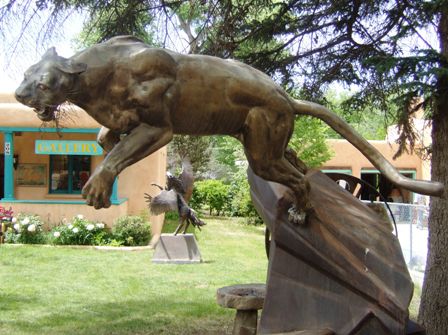 |
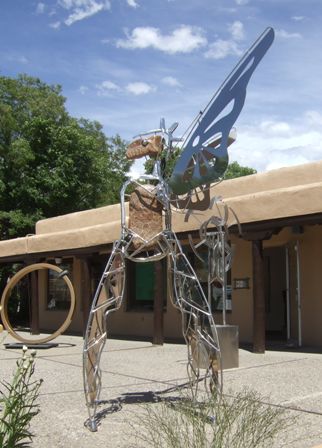 |
Those on the other side of the road are a little more fanciful. This is a
12ft high insect of some sort. |
| The shops have some really unusual and beautiful
pieces in their windows. This is particularly unusual in both its shape and
colouring. BUT we couldn't get it home and this is not the sort of shop
which displays prices...... | 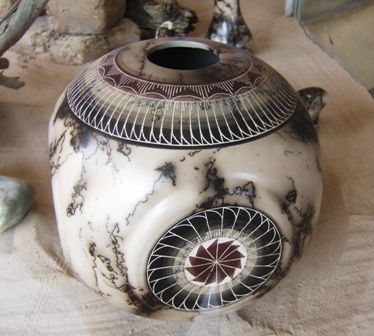 |
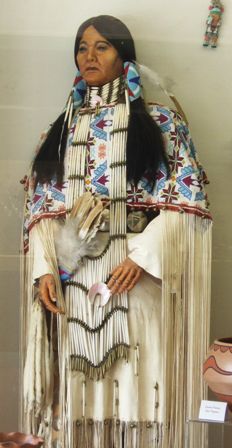 |
And for the house with everything there is this Indian lady (full size to go
with the full regalia). |
| This guy is in the main plaza. He was Don Antonio José
Martinez (1793-1867) and he was one of the most influential Hispanic figures
in New Mexico in the nineteenth century. He was an educator and publisher
and he founded several schools at all levels. He was a leading name in
seeking the annexation of New Mexico to the USA and presided over many of
the legislative processes which resulted in its achievement. | 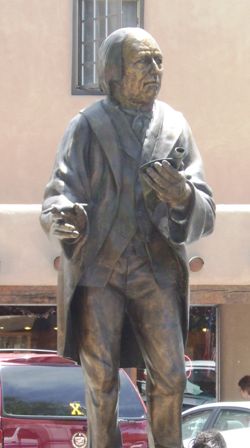 |
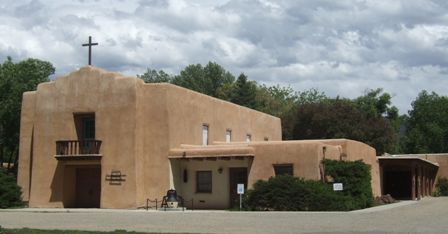 |
Mostly we have seen Catholic churches but this is the First Presbyterian
church built in the traditional adobe style of this area. |
| There are numerous shady courtyards in the town most
of which house galleries or shops for art lovers. | 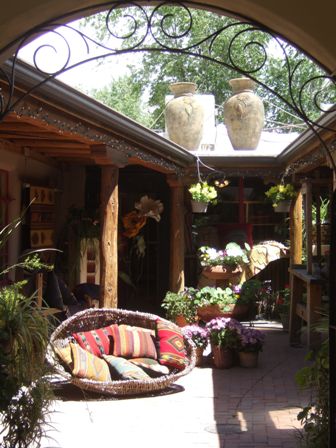 |
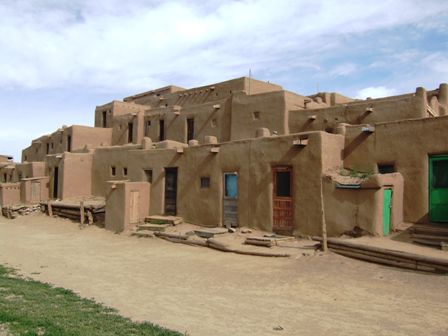 |
Taos Pueblo, a couple of miles outside the town, is a World Heritage site,
and is the oldest continuously inhabited place in the US. It contains the
only remaining double storey buildings in the original native adobe style.
These buildings are reputed to be over 1000 years old. |
| It looks like a piece of rope but it is just a pillar.
Although the buildings are very old, the mud and straw skin is renewed every
year to keep them weathertight. | 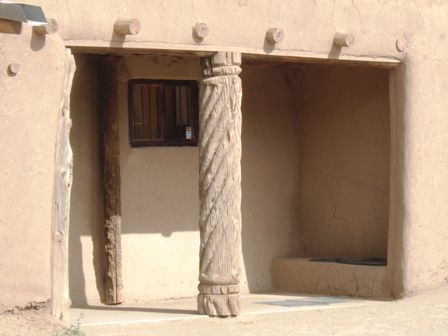 |
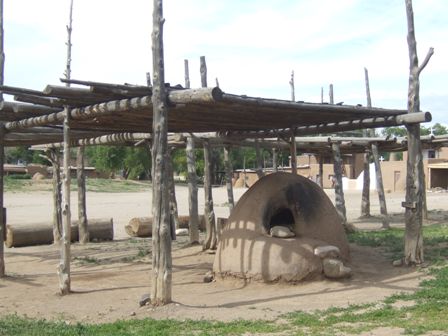 |
These are drying racks for skins, meat and fish and underneath is a
traditional adobe oven. |
| This area is off limits to tourists but is actually
the top of a Kiva (sacred meeting place) much like those we saw last year in
the cliff dwellings at Mesa Verde which is not very far to the north of
here. | 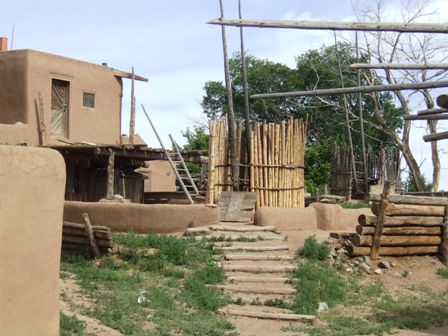 |
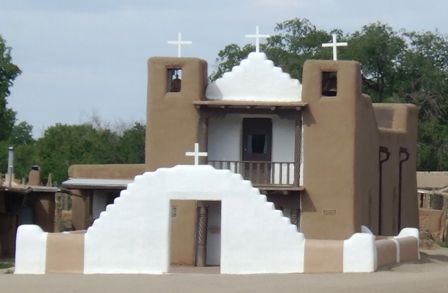 |
The Pueblo Indians permit visitors (and charge a hefty entrance fee). They
do not permit photographs on feast days or in the church. It is a very
simple and quite attractive church. |
| Adobe walls surround the central areas where visitors
are permitted. | 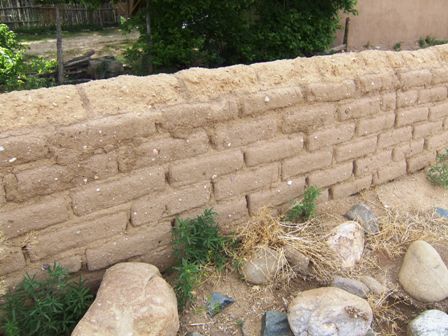 |
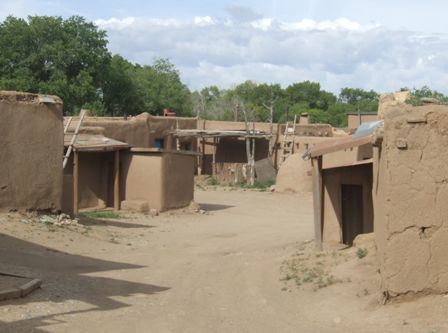 |
Many of these buildings are still lived in on a day-to-day basis - with no
electricity and no running water - in a way which has not really changed in
a thousand years. |
| You are only permitted inside houses which are set up
as shops or workshops and where you are invited as here. There are a lot
of anomalies in the thinking eg the language is not written down or
permitted to be recorded and they will not discuss their beliefs with
outsiders. It is hard to see where the advantage is for them. They must
surely die out eventually | 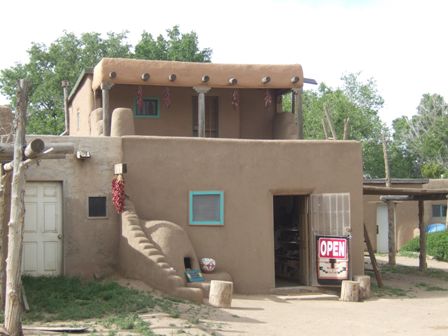 |
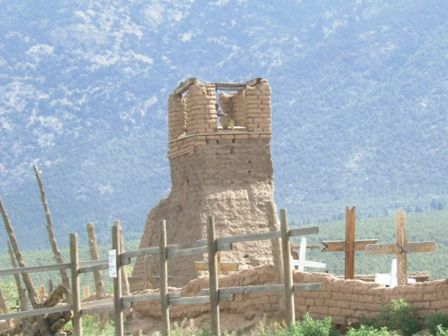 |
.A bell tower above the cemetery. This is part of the old church now
replaced by the one pictured above. |
| We started our return journey but paused on the
outskirts to visit the church of San Francisco de Asis, the oldest surviving
adobe church which is still in use today. It is very famous church which is
much photographed and painted including by artists such as Georgia O'Keefe. | 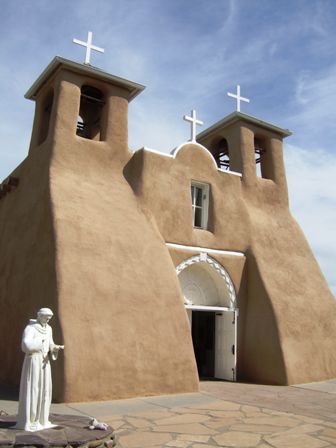 |
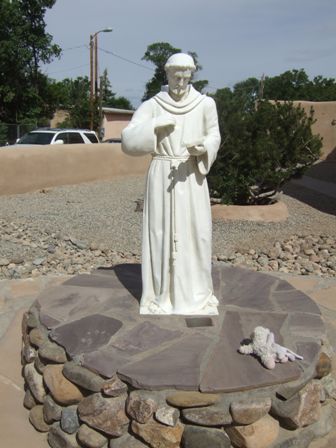 |
It was Sunday and a service was in progress so we had to content ourselves
with the statue of St Francis of Assisi outside. |
|